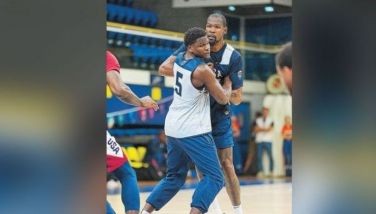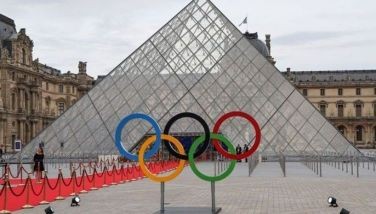More bad news about brain trauma
After the death of Jonas Garcia from injuries supposedly stemming from his competing in a school-based amateur boxing competition, there’s more bad news regarding head trauma and brain injury in sports. Recent findings on the remains of dozens of deceased NFL players have revealed an eerie commonality among them which may have contributed to their deaths. In a sport where players often behave like 250-pound projectiles instead of athletes, impact is unavoidable, collision often very painful, even injurious. The league, in fact, has been accused of downplaying the impact of repeated concussions on the long-term health of its players. A few years ago, some coaches were being accused of convincing players to play through concussions.
The issue was put under a spotlight anew during the one-year anniversary of the Jovan Belcher murder-suicide. On Dec. 1, 2012, the linebacker Belcher, who played for the Kansas City Chiefs, shot and killed his girlfriend Kasandra Perkins. Then he drove his Bentley to Arrowhead Stadium, parked and turned the gun on himself, leaving his three-month old daughter an orphan. People close to him said that was contrary to his personality, and that he was not known to be a violent person off the field. Aside from the rage sometimes induced by possible brain injury, there may also be the frustration due to memory loss, depression and decreased physical capacity, not to mention constant unacknowledged pain. That combination is quite volatile, and not entirely safe for anyone living with an athlete with those symptoms.
Belcher’s first documented head injury came during his rookie season. But he never complained even though he had supposedly suffered multiple concussions. Pro football players just didn’t complain. In the NFL, they glorify the contact, the big hits, the critical tackles. And there is the constant pressure that you may be replaced by someone bigger, stronger, meaner. So you keep quiet, no matter if you’re really hurting.
Ironically, just three days after the Belcher murder-suicide, Boston University published a study linking head injuries to brain damage in athletes and other professionals. Autopsies revealed extensive evidence of protein tangles clogging brain tissue and causing the destruction of brain cells in football players, boxers, wrestlers, hockey players, and military combat veterans. They found evidence of brain damage due to repeated head trauma in 68 of the 85 brains studied. The university also studied 54 dead NFL players, and found chronic traumatic encephalopathy (CTE) in all but two of them. CTE is a progressive degenerative disease found predominantly in athletes (but also in smaller proportions in others). It has been revealed to affect boxers since the 1920’s, when fights were longer and gloves were much smaller.
“The brain degeneration is associated with memory loss, confusion, impaired judgment, impulse control problems, aggression, depression, and, eventually, progressive dementia,†reports BU’s Center for the Study of Traumatic Encephalopathy. The NFL has donated $ 1 million to further study this condition. Unfortunately, it can only be detected after death by staining brain tissue and finding abnormal proteins in the brain.
This is definitely more than anecdotal, and more than coincidental. Despite the safety precautions the league has taken over the years, many players still show certain signs of brain trauma. Aside from permanent aches and pains in the shoulders, back and knees, there are the invisible injuries from years of ramming into equally large players whose main goal is to knock you down as hard as they can. So much blocking and tackling happens in professional football that injury is often downplayed. To acknowledge pain makes one weaker.
Earlier this week, NBC Nightly News did a follow-up report on the families of former NFL players who have been living with brain trauma years after their careers ended prematurely. Aside from the inability to work, wives of the retired players complain of depression, memory loss and quick tempers. In some instances the former athletes would not remember people who attended their wedding. In others, they would have wild mood swings and lash out at the people closest to them. In still others, they would feel so low that family members would get concerned that they would hurt themselves.
In 2010, five-year NFL veteran Henry Bradley’s doctor reported that his degenerative brain injury was “post-traumatic head syndrome†and connected it to “cumulative trauma while playing professional footballâ€. This story is quite common among players who retired in the late 1980’s up to the 1990’s. In August, the NFL settled a suit to the tune of $765 million. The money will be used to compensate players and fund research into head traumas. But it will not be evenly distributed. ESPN reported that some players who were diagnosed after age 45 may not get anything, at all. This group may also include players who saw action for five years or less.
However, some studies have shown that any impact on the head can already cause some form of minute brain damage, even just heading a soccer ball, for example. The brain floats freely around inside the skull. Once the head is hit with any kind of force, the skull accelerates in the opposite direction of the applied force (like a punch in MMA or boxing). The brain does not accelerate along with the force of the blow, and therefore smashes against the inside of the skull, which is no less hard than the outside. If you are hit in the head hundreds of times in a boxing match, that is the number of times your brain crashes into the inside of your skull. Headgear only protects the outside of your head, not the inside.
Bear in mind that football players wear helmets and heavy padding, yet still suffer these symptoms even if they don’t play that many games or get hit that many times. What more boxers who are hit directly and repeatedly on their exposed faces and heads? With the trend towards more professional rules even in amateur competitions like the Southeast Asian Games up to the Olympic Games, are we going to start seeing more of these injuries? In the on-going SEA Games in Myanmar, headgear was no longer used in the boxing events.
Research is now extending into other sports, as well, beginning with Major League Baseball, where getting beaned with a fastball going well beyond the speed limit on the road is unavoidable. Other sports may want to take a long, hard look at what their players may be going through internally, to protect them from potentially debilitating hazards they may face down the road, when they are no longer physically able to fend for themselves.
- Latest
- Trending




























